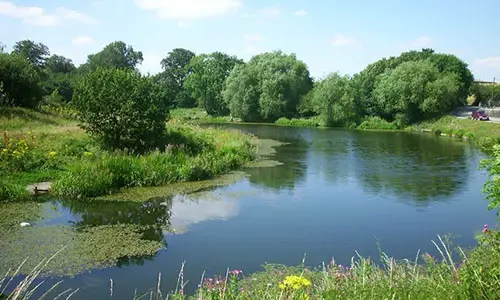Water bodies cover ¾ of the surface of the earth. Some of these water bodies are small while others are comparatively larger. Some are natural like oceans and river whereas some are man-made like lakes and ponds. However, sometimes ponds are naturally formed also that later turn to land again and are smaller than lakes.
Fact 1 What Are Ponds?
Ponds are holes or depressions formed in the ground that are filled with water. They are formed sometimes naturally as part of a river that floods the surrounding lands creating depressions that are filled with stagnant water even after the flood subsides. Such ponds are present in Amazon River areas. Retreating glaciers too create huge depressions that develop into ponds like the ones in North American Prairie Pothole Region. Some are formed by animals like beavers and alligators are also seen to excavate ponds.
Fact 2 Characteristics Of Ponds
A pond is a standing water body. It is smaller than a lake and does not have flowing currents. It is shallower than lakes and sometimes is very deep. A pond often receives water from small streams and rain water that fills it during the monsoons. Pond is a home to a variety of plants and fishes. The surface layer of the water in a pond is quite thin and the bottom is usually made of mud.
Fact 3 Types Of Ponds
There are basically two kinds of ponds namely the permanent and the temporary ponds also known as vernal ponds. The ponds that have water throughout the year are the permanent ponds and those that dry up during the hot weather and are filled with water by the rains or melting snow are the temporary or vernal ponds. These ponds are also known as vernal pools. There are some organisms that adapt themselves in this type of ponds and by creating a cyst they dig deep into the mud in the ponds and wait till the pond is filled with water again.
Fact 4 Ponds Are Homes To Many Plants And Animals
Tiny animals live on the fine layer on the surface of pond water like the water striders and pond snails. Plants like the lily pads and duckweed float on the surface of the ponds. Aquatic insects live on the surface of pond water when they change from the nymph stage to their adult stage. Other aquatic insects like the leeches, crayfish live at the bottom of the ponds in the mud. Turtles and frogs hibernate at the bottom of the ponds. Beavers and muskrats also dwell in ponds. Beavers are also responsible for digging ponds from marshes and streams. The plants that grow on the fringes of the ponds provide food to the animals like geese and muskrats, dragon flies and herons. Many trees and bushes, shrubs and grasses and wild flowers grow well in the wetland areas around the ponds. These provide shelter and shade to animals that visit the ponds and also to those creatures that live in the ponds.
Fact 5 Uses Of Ponds
Ponds provide a unique breeding ground for fish and other wildlife. Those that are artificially made are mostly used for breeding fish for commercial purposes. Ponds are also attractive sources of recreation and people of cities and towns enjoy fishing during holidays. The water from ponds are also used for watering cultivation lands and for other purposes. Ponds that stand in local villages are used for washing and cleaning and bathing also by villagers.
The ponds that do not have fish are the best breeding locations for amphibians as their eggs are not eaten up by fish. Natural ponds as well as artificial ponds both add beauty to landscape.









Leave a Reply